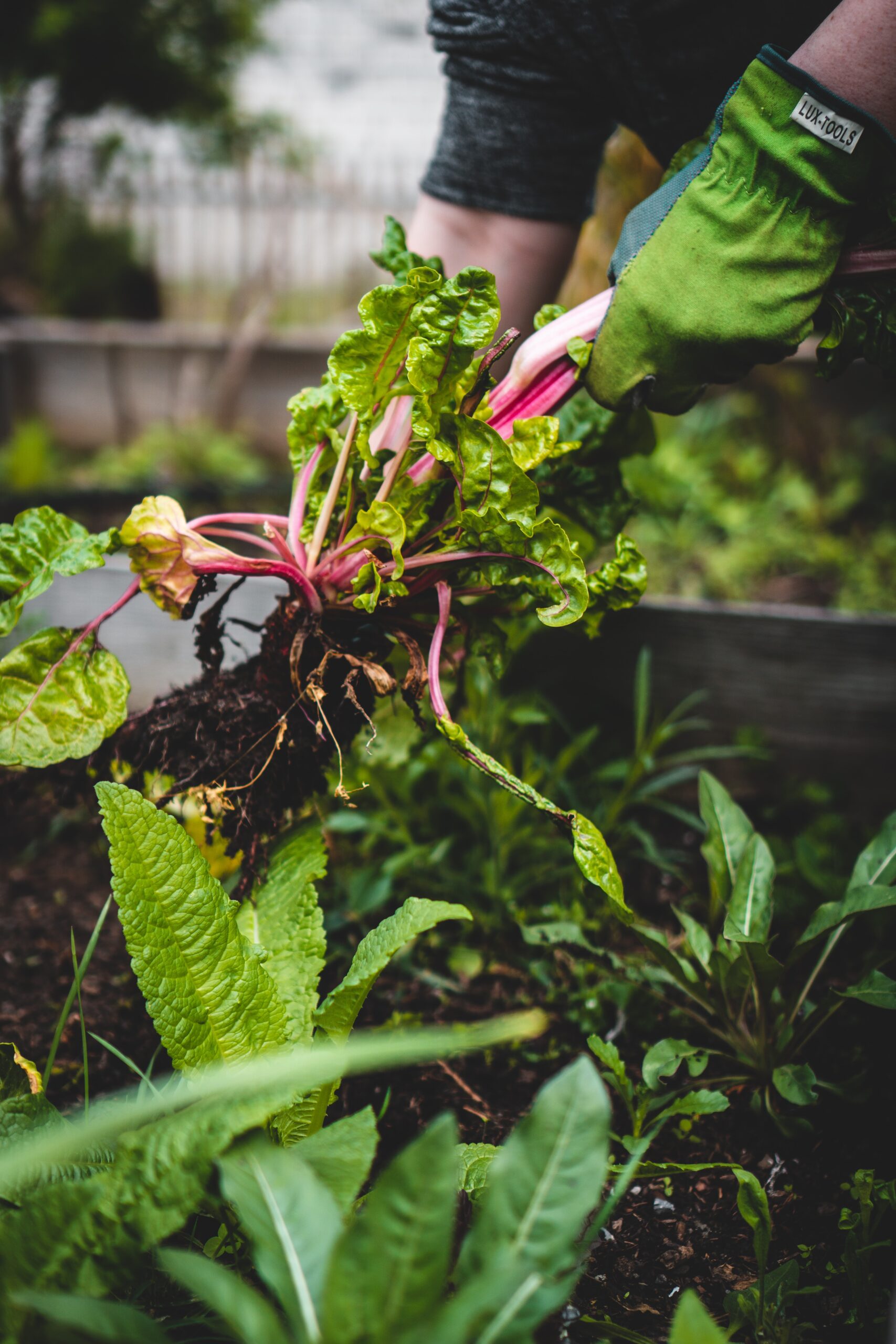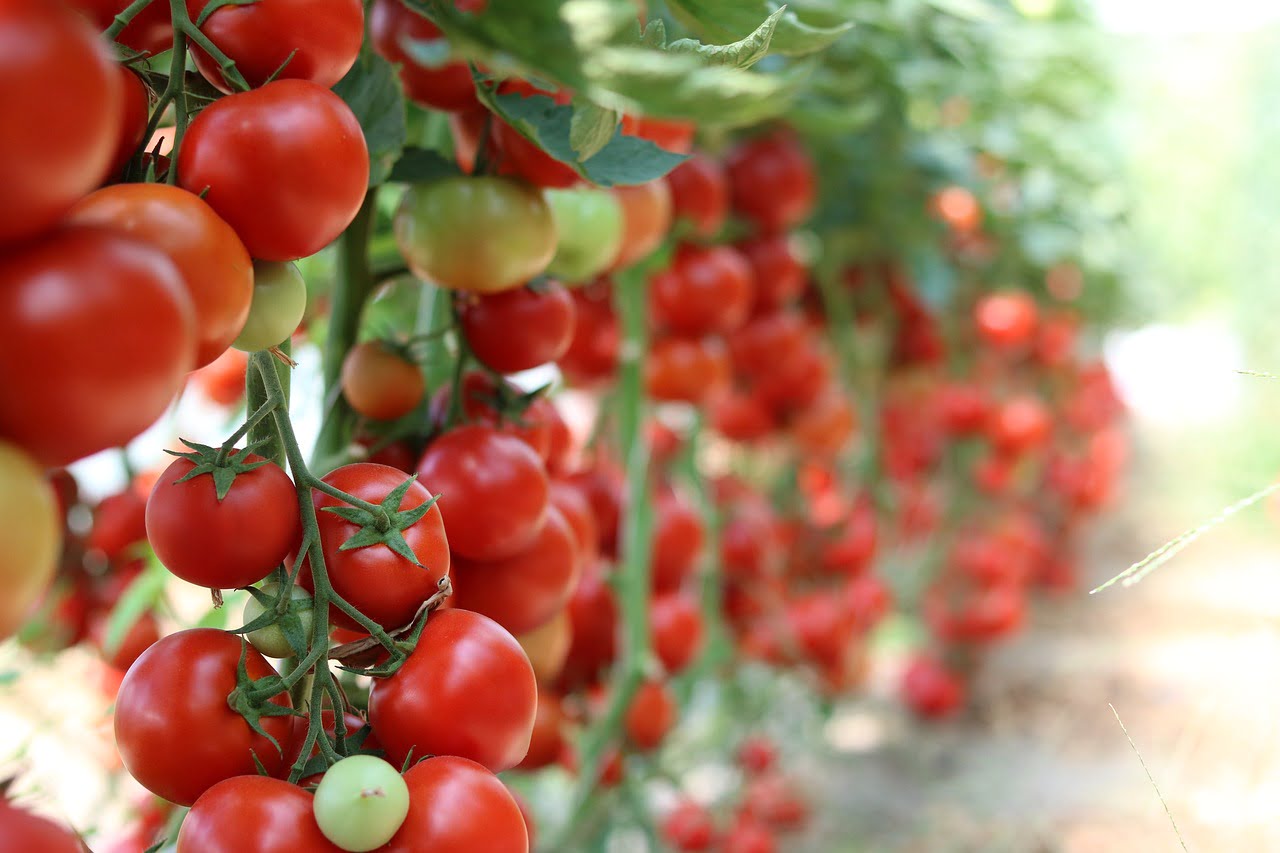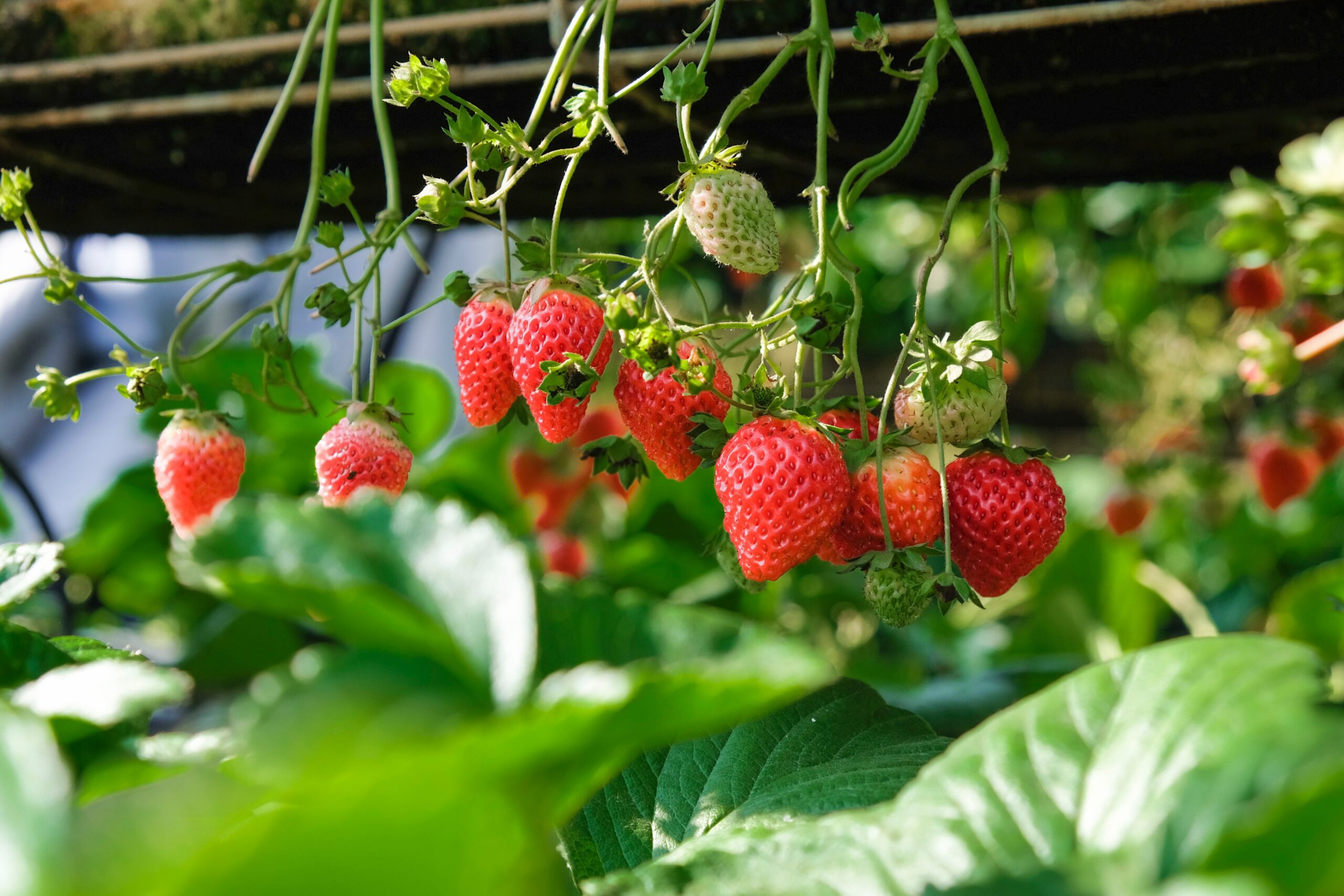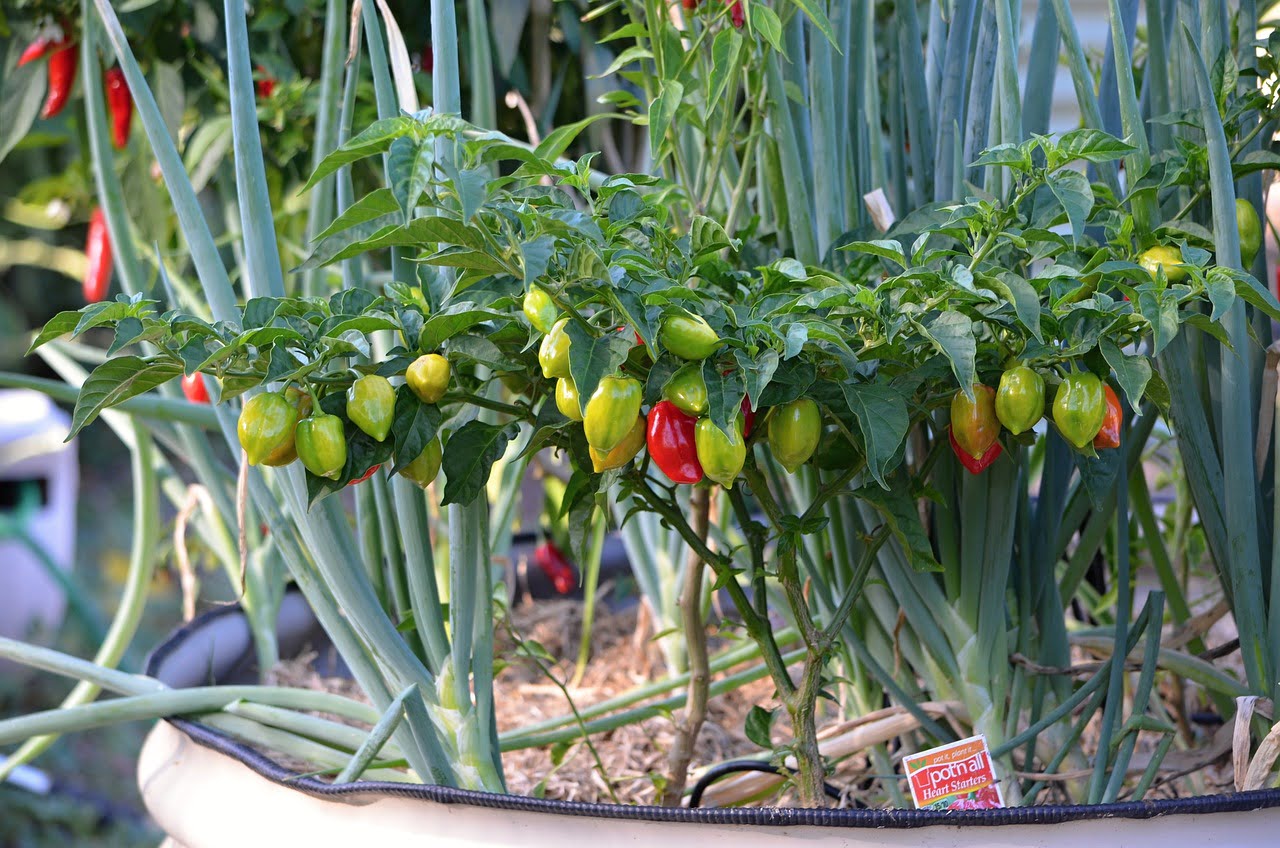Welcome to the world of urban farming! As the demand for sustainable living and a stronger connection with nature continues to rise, more and more individuals are embracing urban farming as a means of cultivating their own fresh produce. But what if you’re faced with limited space? Fear not! In this article, we’ll dive into the best plants for urban farming at home, revealing the small wonders that can deliver abundant harvests even in the most compact of areas. Whether you have a tiny balcony or a petite rooftop, we’ll unlock the secrets to maximizing the potential of your urban garden.

Table of Contents
From Farm to Table: The Benefits of Urban Farming at Home
Benefits include:
- Proximity of farm to table ensures peak freshness and nutrition.
- Increased self-sufficiency and food security.
- Promotion of sustainability and healthy lifestyles
- Reduced reliance on commercial agriculture.
Urban farming at home offers a way to enjoy fresh, organic produce, enhance self-sufficiency, contribute to sustainability efforts, and build stronger communities.
The10 Best Plants for Urban Farming at Home
The Power of Urban Farming
Urban farming is a movement that brings the essence of agriculture into urban settings, allowing city dwellers to relish in the benefits of homegrown food while minimizing their carbon footprint. By implementing innovative urban farming techniques and making the most of limited space, urban farmers can effortlessly transform their homes into flourishing mini-farms.
Selecting the Best Plants for Urban Farming
When it comes to urban farming, the key to success lies in selecting the right plants. In confined spaces, you need plants that are compact, high-yielding, and adaptable to various growing conditions. Here, we present the top 10 plants that perfectly fit these criteria, ensuring a bountiful harvest in your urban garden:
Cherry Tomatoes

Cherry tomatoes are a gem among urban farmers due to their petite size and impressive productivity. These fruits thrive in hanging baskets or vertical gardens, making them ideal for small spaces. Here are some key details to consider for successfully growing cherry tomatoes:
Soil Requirements: Cherry tomatoes prefer well-drained soil that is rich in organic matter. Amend the soil with compost before planting to improve fertility and drainage.
Proper Watering Techniques: Maintain consistent moisture in the soil without waterlogging it. Ensure deep watering whenever the top inch of soil appears dry. To prevent fungal diseases, refrain from overhead watering.
Sunlight Preferences: Cherry tomatoes require full sun to thrive. Ensure that they are exposed to a minimum of 6-8 hours of direct sunlight daily.
Potential Pests or Diseases: Common pests that may affect cherry tomatoes include aphids, whiteflies, and tomato hornworms. Diseases such as blight and blossom-end rot can also be a concern. Monitor your plants regularly and take appropriate measures, such as using organic insecticides or employing cultural practices like crop rotation and providing adequate spacing to promote airflow.
Tips for Maximizing Growth and Yield: Use a trellis or stake system to support the vines and prevent them from sprawling. Prune suckers (side shoots) to redirect the plant’s energy towards fruit production. Regularly fertilize with a balanced organic fertilizer to promote healthy growth and fruit development.
Nutritional Value: Cherry tomatoes are not only delicious but also packed with nutrients. They are a great source of vitamins A, C, and K, as well as antioxidants like lycopene, which is known for its potential health benefits. Lycopene has been associated with reducing the risk of certain cancers and promoting heart health.
Salad Greens

Salad greens, including lettuce and spinach, are known for their rapid growth and the ability to be harvested as baby leaves. This allows for multiple harvests throughout the growing season. Here’s what you need to know about growing salad greens in urban farming:
Soil Requirements: Salad greens thrive in well-drained soil that is rich in organic matter. Add compost or well-rotted manure to improve soil fertility and moisture retention.
Watering Needs: Keep the soil consistently moist to promote healthy growth and prevent bitterness in the leaves. Water regularly, especially during dry periods. Avoid overhead watering to reduce the risk of foliar diseases.
Sunlight Preferences: Most salad greens prefer full sun but can tolerate partial shade, especially in hot climates. For optimal growth, it is recommended to provide a minimum of 4-6 hours of direct sunlight per day.
Potential Pests or Diseases: Common pests for salad greens include aphids, slugs, and snails. Diseases such as powdery mildew and downy mildew can be a concern. Inspect plants regularly and use organic pest control methods if necessary. Avoid overcrowding and provide good air circulation to minimize disease risks.
Tips for Maximizing Growth and Yield: Succession planting is key to ensure a continuous supply of fresh salad greens. Sow seeds every few weeks to stagger the harvest. Harvest outer leaves when they reach a suitable size, allowing the inner leaves to continue growing. Use shade cloth or row covers in hot weather to protect the plants from bolting.
Nutritional Value: Salad greens, including lettuce and spinach, are low in calories and rich in essential nutrients. They are excellent sources of dietary fiber, vitamins A, C, and K, as well as folate and iron. These greens also contain various antioxidants that help protect against cellular damage and promote overall health.
Herbs (Basil, Mint, Parsley, etc.)

Herbs are a must-have for urban farming at home. They thrive in containers and can be grown indoors or outdoors, depending on space availability. Here are some guidelines for growing popular herbs:
Soil Requirements: Most herbs prefer well-drained soil with a slightly acidic to neutral pH. Use a quality potting mix or create a well-draining soil blend for container gardening.
Watering Needs: Herbs generally prefer moderate watering. Ensure that the uppermost inch of soil is given the opportunity to dry out before each subsequent watering. Avoid overwatering, as herbs can be sensitive to root rot.
Sunlight Preferences: Most herbs require full sun to thrive. Place them in a sunny location where they receive 6-8 hours of direct sunlight each day. Certain herbs, such as mint and parsley, have the ability to endure and thrive in areas with partial shade.
Potential Pests or Diseases: Common pests for herbs include aphids, whiteflies, and spider mites. Diseases such as powdery mildew can also occur. Inspect plants regularly, and use organic pest control methods if needed. Prune regularly to promote airflow and prevent disease development.
Tips for Maximizing Growth and Yield: Harvest herbs frequently to encourage bushier growth. To encourage branching, simply pinch off the tips of the stems. Fertilize sparingly with a balanced organic fertilizer to maintain healthy growth. Consider propagating herbs from cuttings to expand your herb garden without purchasing additional plants.
Nutritional Value: Herbs not only add flavor to dishes but also offer a range of health benefits. For example, basil is rich in vitamins A and K, as well as antioxidants. Mint is known for its soothing properties and can aid in digestion. Parsley provides beneficial nutrients such as vitamins A, C, and K, along with folate and iron. Including herbs in your diet can provide a boost of nutrients and contribute to a healthy lifestyle.
Strawberries

Nothing compares to the sweetness of freshly picked strawberries. These luscious treats can be grown in pots, hanging baskets, or even vertical towers, making them a delightful addition to any urban farming at home. Let’s delve into the essential aspects of growing strawberries:
Soil Requirements: For optimal growth, strawberries thrive in well-drained soil that has a slightly acidic pH ranging from 5.5 to 6.5. Incorporate organic matter, such as compost, into the soil before planting to improve fertility and drainage.
Water Requirements: To fulfill the watering needs, maintain the soil moisture at a consistent level, ensuring it remains moist without becoming waterlogged. Water deeply when the uppermost inch of soil becomes dry. Avoid overhead watering, as wet leaves can increase the risk of fungal diseases.
Sunlight Preferences: Strawberries thrive in full sun but can tolerate partial shade. Aim to provide at least 6 hours of direct sunlight per day for optimal fruit production.
Potential Pests or Diseases: Common pests for strawberries include slugs, snails, and strawberry root weevils. Diseases such as gray mold and powdery mildew can also be a concern. Use organic pest control methods and practice good sanitation to minimize pest and disease issues.
Tips for Maximizing Growth and Yield: Plant strawberries in a well-spaced manner to allow for air circulation and prevent crowding. Mulch around the plants to suppress weeds, conserve moisture, and protect the fruits from soil contact. Pinch off runners (long stems) to redirect the plant’s energy towards fruit production.
Nutritional Value: Strawberries are not only sweet and delicious but also a nutritional powerhouse. They are rich in vitamin C and manganese and provide dietary fiber. Strawberries are also packed with antioxidants, including anthocyanins, which give them their vibrant red color. These antioxidants have been associated with reducing inflammation and promoting heart health.
Peppers

Peppers come in a variety of shapes, sizes, and flavors, making them a versatile choice for urban farming. Here are some essential details for successfully growing peppers:
Soil Requirements: Peppers prefer well-drained soil that is rich in organic matter. Incorporate compost or well-rotted manure into the soil before planting to enhance fertility.
Watering Needs: Provide peppers with consistent moisture throughout the growing season. To prevent root rot, it is important to avoid overwatering or saturating the soil. Instead, water deeply when the top inch of soil is dry.
Sunlight Preferences: Peppers require full sun to thrive. Make sure that they are exposed to a minimum of 6-8 hours of direct sunlight every day.
Potential Pests or Diseases: Common pests for peppers include aphids, pepper weevils, and pepper maggots. Diseases such as bacterial spot and blossom end rot can also occur. Monitor plants regularly and use organic pest control methods when necessary. To reduce the risk of diseases, it is advisable to refrain from using overhead watering methods.
Tips for Maximizing Growth and Yield: Stake or cage pepper plants to provide support as they grow. Pinch off the first flowers that appear to encourage the plant to focus on vegetative growth initially. Fertilize regularly with a balanced organic fertilizer to promote healthy foliage and fruit development.
Nutritional Value: Peppers, whether sweet or hot, are a great addition to any diet. They are rich in vitamin C, providing more than twice the daily recommended intake in a single serving. Peppers are additionally rich in vitamin A, potassium, and dietary fiber. The capsaicin found in hot peppers has been studied for its potential health benefits, such as boosting metabolism and reducing inflammation.
Beans

Beans are an excellent choice for urban farming at home due to their vertical growth habit. With their climbing vines, they can be trained to grow on trellises, fences, or even in hanging baskets, maximizing your space while delivering a generous harvest. Here’s what you need to know about growing beans:
Soil Requirements: Beans thrive in well-drained soil with good fertility. Prepare the soil by incorporating organic matter before planting to improve nutrient retention.
Watering Needs: Beans require regular watering to maintain consistent soil moisture. Avoid overhead watering to prevent foliar diseases.
Sunlight Preferences: Beans prefer full sun but can tolerate partial shade. Provide at least 6 hours of direct sunlight per day for optimal growth and yield.
Potential Pests or Diseases: Common pests for beans include aphids, bean beetles, and spider mites. Diseases such as powdery mildew and bacterial blight can also occur. Practice crop rotation and use organic pest control methods to manage pests and diseases.
Tips for Maximizing Growth and Yield: Install trellises or supports for climbing bean varieties. To promote continuous production, it is recommended to regularly harvest mature beans. Avoid excessive nitrogen fertilization, as it can promote lush foliage growth at the expense of fruit production.
Nutritional Value: Beans, including varieties like kidney beans, black beans, and pinto beans, are excellent sources of plant-based protein. They are also rich in dietary fiber, which promotes digestive health and helps maintain stable blood sugar levels. Additionally, beans provide a range of vitamins and minerals, including folate, iron, and magnesium.
Microgreens

If you’re looking for a quick and nutritious addition urban farming at home, microgreens are the way to go. These tiny, tender greens are harvested when they’re still young and packed with nutrients. Let’s explore the key information about cultivating microgreens:
Soil Requirements: Microgreens can be grown in a variety of growing mediums, including soil, coco coir, or hydroponic mats. Use a lightweight, sterile, and well-draining medium for optimal growth.
Watering Needs: Keep the growing medium consistently moist but not waterlogged. Use a spray bottle or misting system to gently water the microgreens. To prevent fungal diseases, it is important to refrain from overwatering.
Sunlight Preferences: Microgreens require bright, indirect light to grow properly. Place them near a window or use grow lights to provide adequate light intensity.
Potential Pests or Diseases: While microgreens are generally less prone to pests and diseases, issues such as damping-off (a fungal disease) can occur if the growing medium is too wet. Ensure proper ventilation and sanitation to minimize disease risks.
Tips for Maximizing Growth and Yield: Sow microgreen seeds densely to achieve a thick crop. Harvest the microgreens when they have developed their first set of true leaves, usually within 1-3 weeks. Use sharp scissors to cut the greens just above the soil level.
Nutritional Value: Microgreens are young vegetable greens that are harvested when they are just a few inches tall. They can contain higher concentrations of vitamins and minerals compared to their mature counterparts. For example, microgreens of broccoli, kale, and radish can be rich in vitamins A, C, and K, as well as essential minerals like potassium and iron.
Cucumbers

While cucumbers are notorious for their sprawling vines, compact bush varieties have been specifically bred for small spaces. These bush cucumbers can be grown in containers or hanging baskets, allowing you to relish the crispness of homegrown cucumbers without sacrificing precious space. Let’s discover the essential information about cultivating cucumbers:
Soil Requirements: Cucumbers thrive in well-drained, fertile soil with a pH between 6.0 and 7.0. Amend the soil with organic matter, such as compost, to improve its moisture retention and nutrient content.
Watering Needs: Cucumbers require consistent moisture to prevent bitterness and ensure proper fruit development. Provide deep, thorough watering to keep the soil evenly moist. Applying mulch around the plants aids in moisture conservation.
Sunlight Preferences: Cucumbers love full sun and require at least 6-8 hours of direct sunlight per day. Position them in a location that receives ample sunlight.
Potential Pests or Diseases: Common cucumber pests include cucumber beetles, aphids, and powdery mildew. Diseases such as downy mildew and bacterial wilt can also affect cucumber plants. Monitor regularly for signs of pests or diseases and use organic pest control methods as needed.
Tips for Maximizing Growth and Yield: Train the vines on trellises or supports to save space and improve air circulation. Harvest cucumbers when they are firm and before they become overripe, as mature fruits can inhibit further production.
Nutritional Value: Cucumbers are known for their high water content, which makes them refreshing and hydrating. They are low in calories and provide small amounts of vitamin K, potassium, and dietary fiber. Cucumbers also contain antioxidants, such as cucurbitacins and flavonoids, which have been associated with potential health benefits, including anti-inflammatory and anticancer properties.
Radishes

Radishes are a fast-growing root vegetable that thrives in small spaces. They can be grown in containers, window boxes, or even vertically in towers. Here’s what you need to know about growing radishes:
Soil Requirements: Radishes prefer well-drained soil with a pH between 5.8 and 6.8. Loosen the soil to a depth of 6-8 inches and remove any rocks or debris before planting.
Watering Needs: Radishes require consistent moisture to develop crisp roots. Water the soil evenly to keep it consistently moist but not waterlogged. Avoid uneven watering, as it can lead to splitting or pithiness.
Sunlight Preferences: Radishes prefer full sun but can tolerate partial shade. Provide them with at least 4-6 hours of direct sunlight per day for optimal growth.
Potential Pests or Diseases: Common pests that may affect radishes include flea beetles, root maggots, and aphids. Diseases such as clubroot and damping-off can also occur. Practice crop rotation and monitor for pests and diseases regularly.
Tips for Maximizing Growth and Yield: Thin the radish seedlings to provide adequate space for each plant to grow. Harvest radishes when they reach the desired size, as prolonged maturity can result in pithiness or bitterness. Succession planting every 7-10 days can ensure a continuous harvest throughout the season.
Nutritional Value: Radishes are crunchy root vegetables that offer a range of nutritional benefits. They are low in calories and a good source of vitamin C and dietary fiber. Radishes also contain various antioxidants, such as anthocyanins, which contribute to their vibrant color and potential health benefits.
Dwarf Fruit Trees (Pawpaw, Apple, Citrus, etc.)

If you have a bit more space available, consider dwarf fruit trees for your urban farm. These pint-sized trees can be grown in containers and offer a mini orchard experience in your own backyard. Here’s what you need to know about growing dwarf fruit trees:
Soil Requirements: Dwarf fruit trees thrive in well-drained, loamy soil with a pH between 6.0 and 7.0. Prior to planting, enhance the soil’s fertility and drainage by incorporating compost into it.
Watering Needs: Provide regular watering to keep the soil consistently moist but not waterlogged. When it comes to watering, it is advisable to opt for deep, infrequent watering over frequent shallow watering. Mulching around the trees can help conserve moisture.
Sunlight Preferences: Fruit trees require full sun to produce healthy and abundant fruit. Make sure they receive a minimum of 6-8 hours of direct sunlight each day.
Potential Pests or Diseases: Common pests that may affect fruit trees include aphids, scale insects, and fruit flies. Diseases such as powdery mildew and brown rot can also occur. Monitor the trees regularly and use appropriate pest control methods when necessary.
Tips for Maximizing Growth and Yield: Prune the trees annually to maintain their compact size and promote airflow. Utilize suitable fertilizers to supply the essential nutrients. Hand-pollination may be required for certain fruit tree varieties.
Nutritional value: It is rich in vitamins A, C, and E, as well as dietary fiber. Pawpaw also contains antioxidants like flavonoids and phenolic compounds, which have been linked to various health benefits, including anti-inflammatory and immune-boosting properties. Additionally, pawpaw is a good source of minerals such as potassium and magnesium.
Conclusion:
Urban farming provides an opportunity for individuals to cultivate their own fresh produce, even in limited spaces. By selecting the right plants, implementing creative gardening techniques, and addressing common challenges, you can maximize the potential of your urban garden. Whether you choose cherry tomatoes, salad greens, herbs, strawberries, peppers, beans, microgreens, cucumbers, radishes, or dwarf fruit trees, the key lies in understanding their specific requirements and providing optimal growing conditions. With a little knowledge and dedication, your small space can yield a bountiful harvest, allowing you to embrace self-sustainability and the joy of homegrown food. Happy urban farming!
